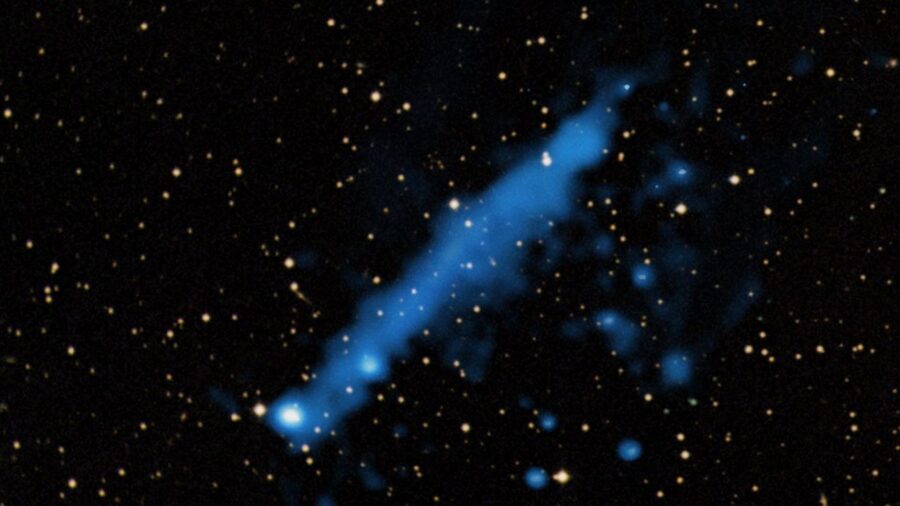Mysterious Shadows Floating In Deep Space Stump Scientists

Thanks to some research by scientists on deep space, 12 previously unknown and unseen objects have potentially been discovered. The research depends heavily on neutron stars with regular intervals, acting as clocks in space, called pulsars. While there is still a lot to figure out about these mysterious shadows, the research so far is rather promising.
Pulsars

In space, there are objects called pulsars, neutron stars rotating at a rapid pace. Because of how they rotate, they send out radiation pulses at regular intervals. Every pulsar is different, with some sending out radiation every few seconds and some every few milliseconds.
No matter the time, all of these pulsars have something in common. They are all incredibly consistent, acting as a sort of timer in space. No matter what, these pulses are released at the same time interval.
However, while the pulsar’s emissions are always equally spaced, the way Earth sees these pulses changes based on external factors. As Earth moves in space around the sun, the time between the pulsars appears to change, though it actually doesn’t.
Getting A Clear Picture

Professor LoSecco, from the University of Notre Dame, explained how it works during an interview with IFLScience: “The pulsar doesn’t exist in isolation. These pulses come from these millisecond pulsars, many of which are found in binaries. So they’re moving around, they’re in orbit around another object. And so you have to remove all that motion. The Earth is moving around the Sun. You have to remove that motion. You have to move all this motion so you can get the actual time of arrival.”
So how did pulsars and their regular radiation pulses lead scientists to figure out there are invisible objects in space?
As objects pass in front of the pulsar, the time delay for the pulse changes. Something about the same mass as the sun would create roughly a 10-microsecond delay.
A Complex Process

This isn’t much at all, especially to the naked eye. However, with computers and cameras, it’s enough of a difference for scientists to start tracking the changes.
It takes quite a bit of factoring to notice these changes. Not only do the scientists have to notice the minute differences in the pulsar’s timing, but they also have to run calculations to make sure they ignore the changes in the timing based on Earth’s movements.
It’s rather complicated, but worth it if the pulsars can tell scientists something new about space.
Currently, his research is focused on eight independent pulsars operating at regular intervals of 65 milliseconds. They were tracked and their regular pulses were recorded for over 10,000 days.
A Lot Remains Uncertain

During this tracking, there were 12 significant time delays that could be candidates for unknown objects in space, based on the changes of these eight pulsars. Some of these candidates were relatively small, such as one which was about a fifth of the size of the sun.
While the objects have been identified, what they are exactly still remains uncertain. There are several bodies in space that would make sense. Potentially, they could be rogue planets, dwarf stars, dark matter, or something else entirely.
“I have been warned not to call them planets, not to call them dark matter, just call them mass concentrations because, just by looking in the radio, you can’t determine what they are. I can’t even guarantee that they’re dark. They could be a brown dwarf or some sort of a white dwarf or something else.”
Covering All The Bases

The research is ongoing. LoSecco is sure there’s more to discover by using the pulsars. However, he is also curious as to what he might have overlooked or factors he hasn’t yet considered.
He’s excited to hear what other scientists have to say, such as probable ideas for what the objects might be, or even criticisms of his process of using the pulsars.
While most people aren’t eager to be criticized, LoSecco is willing to hear any opinions as skepticism allows him to do his work better and cover all possibilities for what he’s discovered.
Source: IFLScience












